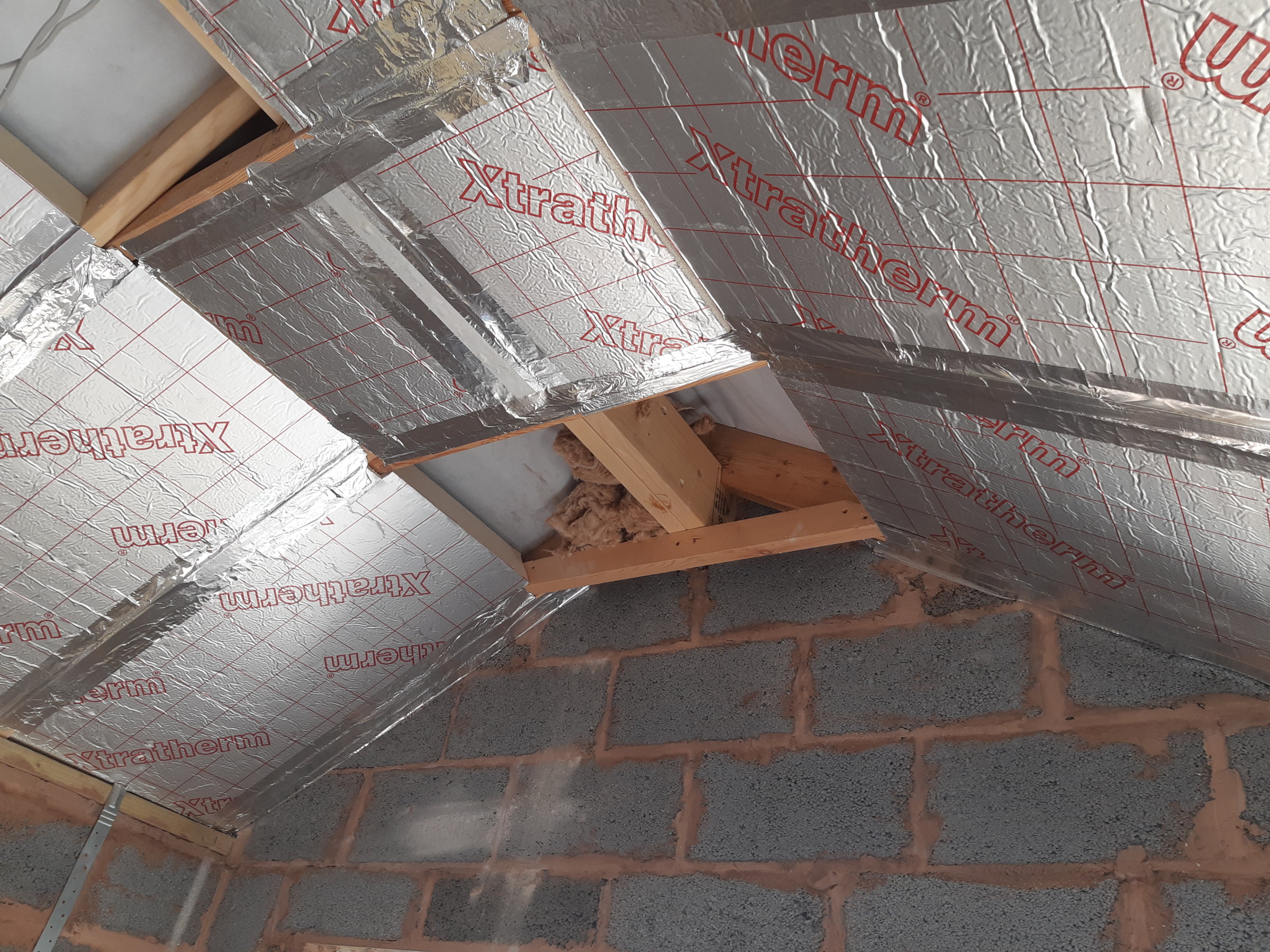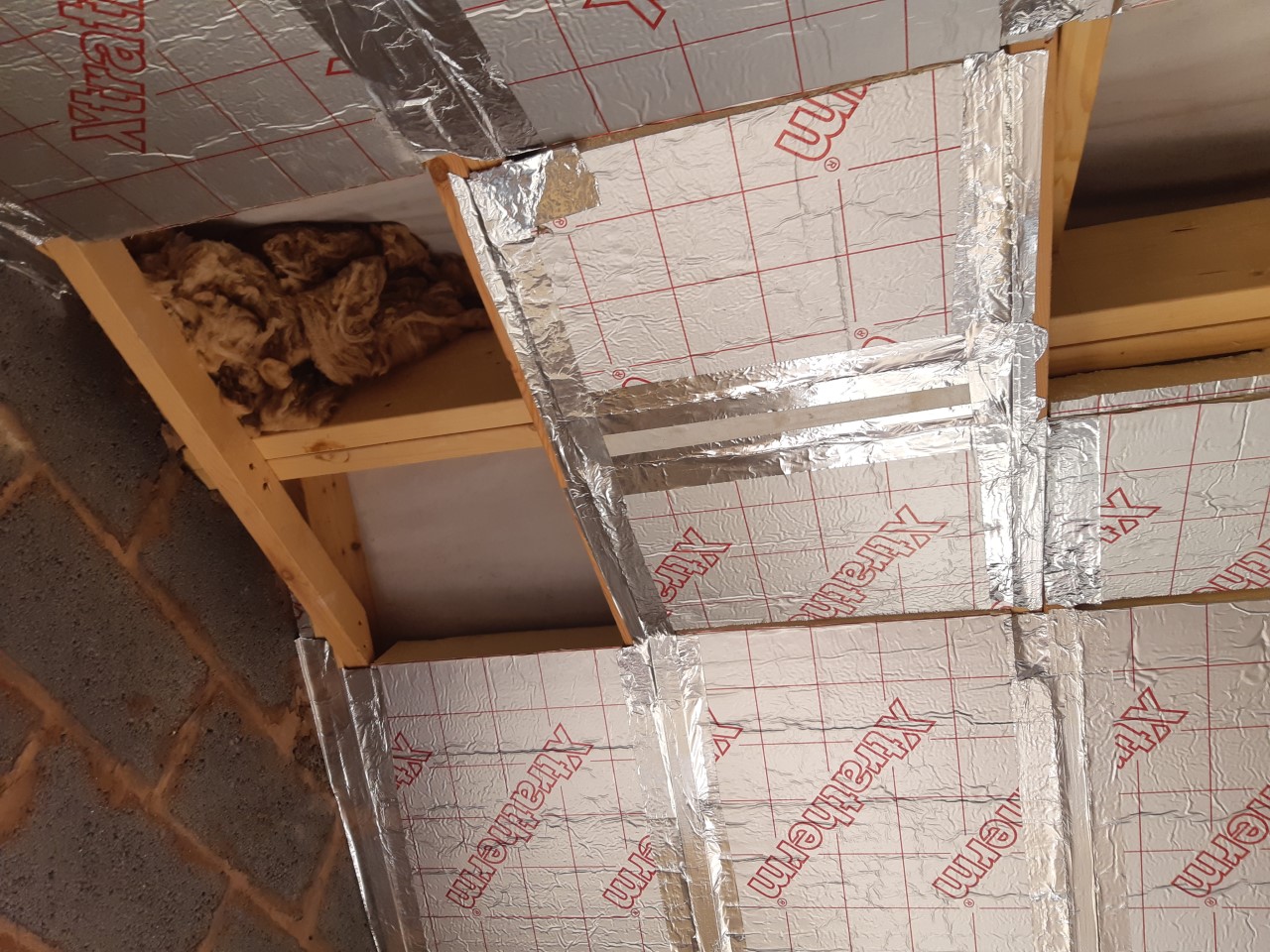- Joined
- 1 Apr 2019
- Messages
- 2
- Reaction score
- 0
- Country

Hi,
We’re part way though an extension and are doing some bits ourselves. The builder did the construction, but we’re doing the roof insulation and the boarding.
We’ve used 10cm kingspan between the rafters, and will then cover the whole thing in 2.5cm Kingspan, which is what building control want.
Do we need to tape the rafters between the 10cm insulation with foil tape to meet bulidng regs?
Many thanks,
We’re part way though an extension and are doing some bits ourselves. The builder did the construction, but we’re doing the roof insulation and the boarding.
We’ve used 10cm kingspan between the rafters, and will then cover the whole thing in 2.5cm Kingspan, which is what building control want.
Do we need to tape the rafters between the 10cm insulation with foil tape to meet bulidng regs?
Many thanks,







